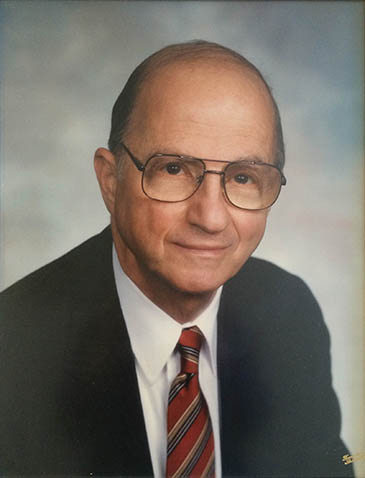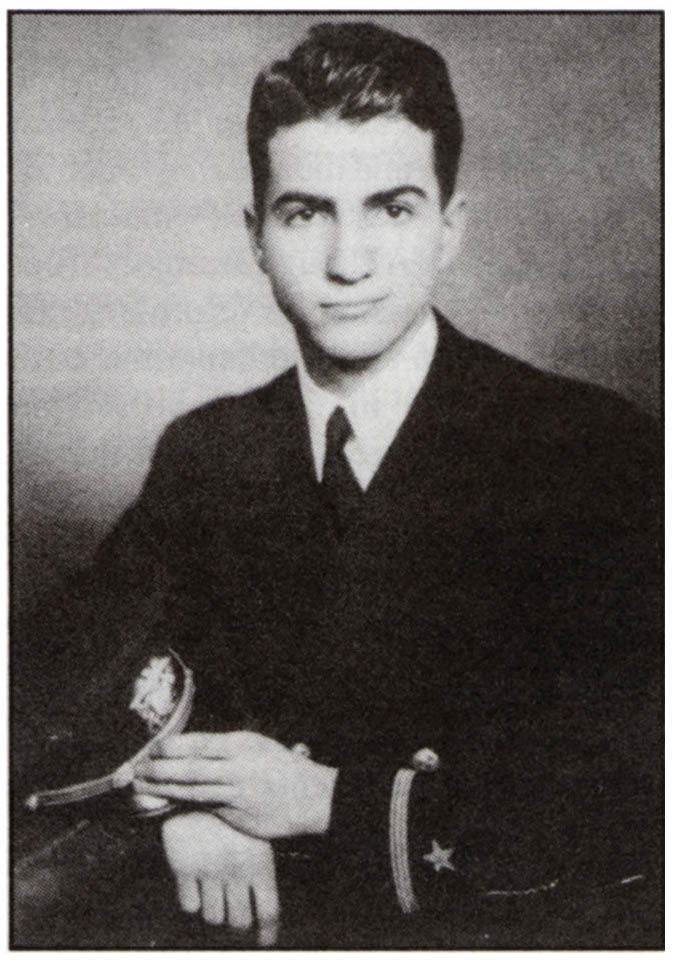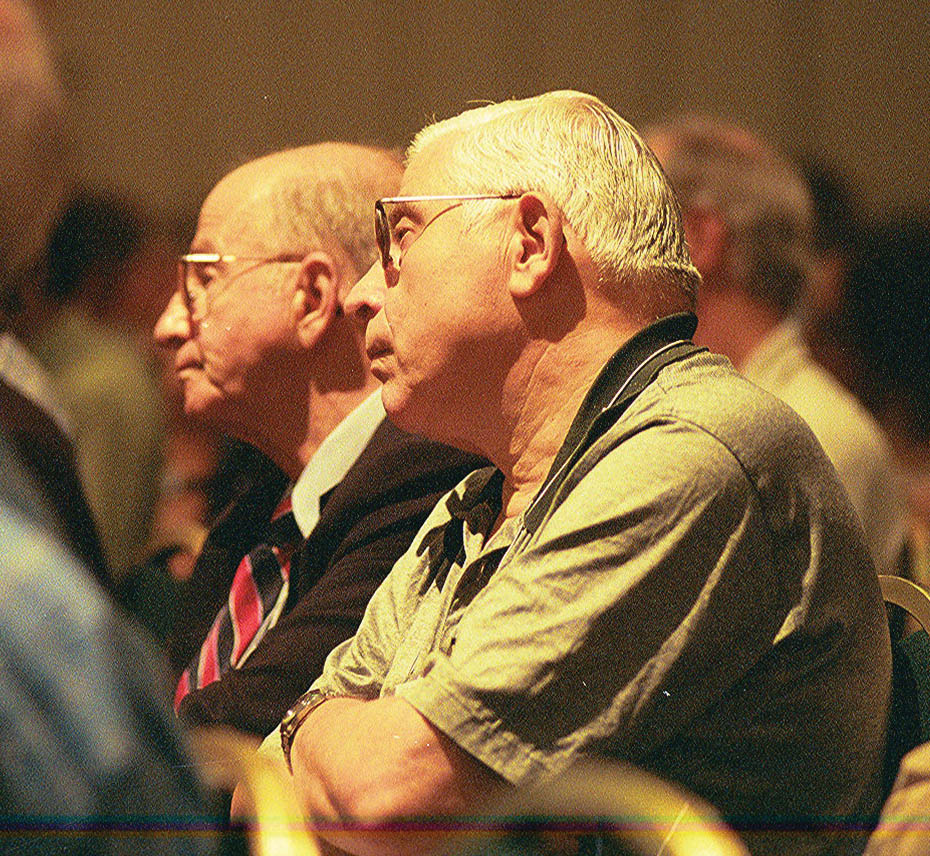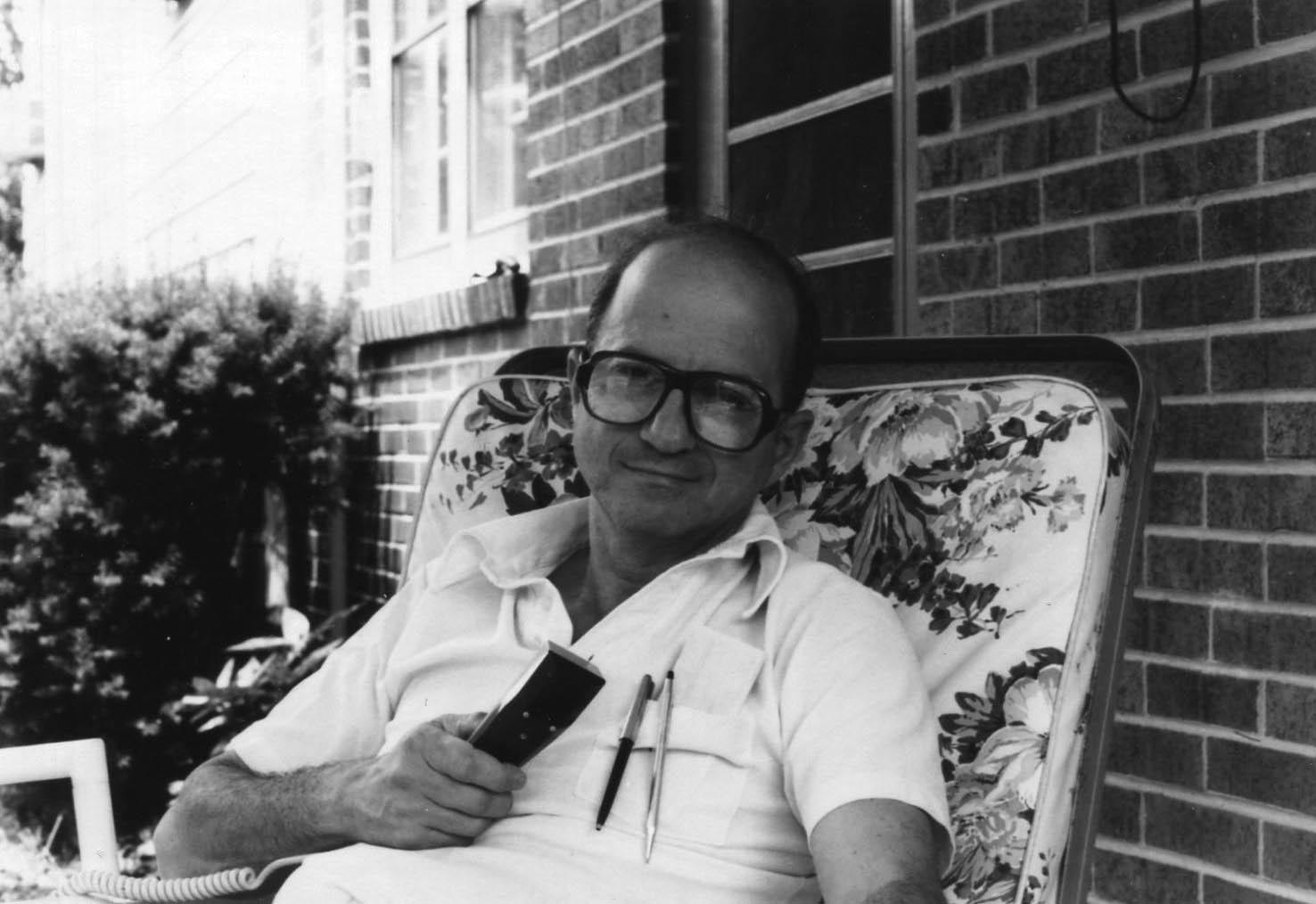Obituaries: I. Edward Block

I. Edward Block, a founder and longtime managing director of SIAM, died on February 18 at the age of 90. From 1952, when SIAM was officially incorporated, through 1976, the beginning of his full-time employment at SIAM, until his retirement in the fall of 1994, Ed had a hand in every aspect of every step of SIAM’s development and growing presence in the international mathematical sciences community. It was no accident that he chose the title “managing director.”
Ed graduated from Haverford College in 1944 with a bachelor’s degree in physics. He was then inducted into the Navy and immediately assigned to the Naval Research Lab, where he spent just slightly more than a year (1944–45) as part of the mathematics group, “building and testing electronic circuits for radar anti-jam.”* In 1946 he entered Harvard as a PhD student, still in physics. He continued to be drawn to mathematics, however, under the influence of several people at Harvard, including Garrett Birkhoff (who would become SIAM president in 1967–68). Looking back, Ed explained, “The use of mathematics in solving real-world problems . . . and I might add computers to that when they became useful in solving real-world problems, is really the theme of an awful lot of what I did.”
In a sense, SIAM emerged from a mistake—in a lemma in Ed’s original, almost complete Harvard dissertation. Deeming the problem unfixable, he abandoned the topic and began a completely different dissertation, this time in singular integrals, under the supervision of Joseph Walsh. Having accepted an instructorship at the University of Michigan contingent on completion of his PhD, Ed was reluctant to take up the post before the (second) dissertation was absolutely complete. (This part of the story will surprise no one who knew him.) By 1952, when he received the degree, thoughts of an academic career had dissipated and Ed embarked on a series of jobs in industry, always in the Philadelphia area.
As a mathematical analyst (1951-54) at Philco Corporation, a radio and television company, Ed missed the congenial ambiance of graduate school, in particular the Thursday afternoon colloquium. It wasn’t long before—in Atlantic City, at a meeting of the American Institute of Electrical Engineers on servo mechanisms—he had the idea that Philadelphia needed an industrial mathematics society. Realization of the idea took the form of a series of evening lectures, held in the Picture Gallery of nearby Drexel Institute of Technology. The first speaker, in March 1952, was W.F.G. Swann, a physicist from the University of Pennsylvania (“Mathematics, the Backbone of Science”); he was followed in April by Mina Rees of the Office of Naval Research (“The Role of Mathematics in Government Research”) and, in May, William E. Bradley, Jr., co-director of research at Philco (“Is it Mathematics?”).

Philco and Drexel were among the early supporters of the activities of Ed and his colleagues—Drexel with meeting and, later, office space, Philco with funding as well as some of its energetic employee’s time. Bradley, the first president of SIAM (1952), resigned (to Ed in an often recounted story, in a parking lot), after a very short time in office; Philco had drawn the line, requiring that Bradley spend more time on company business. Ed’s parents, too, were early supporters, recruited to help stuff envelopes.
Ed moved on to Burroughs (1954-59), where he ran the Computer Center, and, in 1959, to Univac, where he eventually became manager of the Applied Math group before leaving in 1964. His work at Burroughs called on his technical skills, as well as on his growing “other side”—management and the selling of jobs to customers. “The challenging part about it was delivering what I promised,” he said of the latter. “The kick that I got out of all of this was that I was doing something for an engineer, and I got a special delight out of seeing the reaction of the engineer when he saw how he could use the mathematics and the computer to solve a problem.” He added (on a note that will not be necessary for many readers), “That’s consistent with SIAM, by the way.”
As a member of the SIAM Council, Harold Kuhn (who would become SIAM president in 1954–55) urged Ed and his colleagues to think nationally. Ed credited Kuhn not only for arranging SIAM’s participation in the 1954 joint AMS–MAA meeting, held in Pittsburgh, but also for having SIAM mentioned in a local newspaper—Kuhn had spoken to reporters on the importance of mathematics in solving industrial problems, and on the role of SIAM in promoting the mathematical methods.
Providing a backdrop for many of these early activities was the ENIAC, completed at the University of Pennsylvania’s Moore School of Electrical Engineering in 1946, too late for use in World War II, but a source of fascination for many in the area, including Ed. J. Presper Eckert and John Mauchly, the main designers of the ENIAC, formed the Eckert–Mauchly Corporation in 1946. Ed often reminisced about the writing of the SIAM bylaws at the Eckert–Mauchly division of Remington Rand Univac; those familiar with the early history of SIAM will know that Mauchly was the fourth SIAM president (1955-56).
Even in those very early days, Ed was convinced of the need for a journal and a newsletter: “I felt that it was important to have something in print that would reflect the society that we were talking about . . . just to give this thing presence. . . . If you have some hard copy and it’s publicly available, . . . then it makes the thing stick. . . . I might add that that whole idea prevailed through all of my years at SIAM.”
Ed had, and vigorously put forward, ideas about the proper subject matter for SIAM. Following the early lectures, the group ventured into computing issues, with “a smattering of operations research, a smattering of stuff in electrical engineering, a little physics here and there.” Had it continued along those lines, he believed, the society would not have survived: The focus needed to be shifted to mathematics, without bringing it under the umbrella of the American Mathematical Society, which he characterized as being about “pure mathematics and very academic.”

The first issue of the Journal of the Society for Industrial and Applied Mathematics was published in September 1953, with four papers, including “Automatic Digital Computers in Industrial Research,” the first in a series. As acting managing editor of the journal—which for nine years was SIAM’s only journal—Ed solicited papers, chased down authors who were slow to fulfill their promises, and on at least one occasion transcribed an author’s spoken word to print; he also found a printer, whose activities he oversaw, along with publicity and distribution. All the while, he had his eye on the big picture, and as he recounted in the oral history interview, the process of spinning off more specialized journals (beginning with Series A: Control in 1962 and Series B: Numerical Analysis in 1964) was not completely smooth.
A 1957 conference on matrix computation, held at Wayne State University, marked a turning point for the SIAM journal, Ed said. As agreed beforehand, Don Thomsen (SIAM president, 1958–59) made an announcement inviting speakers to submit their papers to the journal. The stream of submissions that ensued, Ed recalled, turned “a catch-as-catch-can journal for papers that we could scrounge from people” into an established journal. “And it turned the SIAM journal’s orientation toward numerical computation and numerical analysis.”
It may be that every publisher has stories of gems that got away. For Ed, a prime example was Mathematical Tables and Aids to Computation, “a relatively practical numerical analysis journal” supported by the Navy, which was looking to turn it over to another organization. Phil Davis, a friend of Ed’s from graduate school, then at the National Bureau of Standards, introduced him to the editor of the journal, and Ed was enthusiastic about the offer to make it a SIAM publication. But SIAM by that time had a Board of Trustees and Council, and a role for computing in an applied mathematics society wasn’t seen by all as a natural fit. In the end, the Council voted it down; today, known as Mathematics of Computation (MOC), the journal is published by the AMS.
In a related story with a happier theme, Phil Davis had gotten a paper by Milton Abramowitz and Irene Stegun, “Pitfalls in Computation,” for the December 1956 issue of the SIAM journal. Ed, who as always handled practical details, phoned Abramowitz (he and Stegun were both at NBS) to find out how many reprints they would like. Taken aback by Abramowitz’s request for 1000, Ed was even more surprised to receive a request for another 1000 a month later, and yet another 1000 some months later. “If you know the math community,” Ed commented, “some authors get two or three requests for a reprint. . . . And remember, this was numerical analysis,” and the SIAM Council had said no to the computation journal.
SIAM published the first issue of SIAM Review in 1959. Other new journals appeared at irregular intervals during Ed’s tenure, including the SIAM Journals on Applied Mathematics (1966), Mathematical Analysis (1970), Computing (1972), and Scientific and Statistical Computing (1980). SIAM Journal on Algebraic and Discrete Methods, which also appeared in 1980, would be divided into Matrix Analysis and Applications and Discrete Mathematics in 1988. SIAM Journal on Optimization was introduced in 1991. The SISSC and SIMAX startups featured frequent interactions with Gene Golub, the founding editor of both (and SIAM president in 1985-86).
An earlier (mid-50s) journal project initiated by Ed and Brockway McMillan (SIAM president, 1959-60) was an English translation of the Russian probability journal Teoriya Veroyatnostei i ee Primeneniya. “It was a way of doing something in probability and statistics,” Ed said. “But it was highly theoretical . . . and maybe that’s why we had problems trying to make something more happen.”

The development of Ed’s publishing skills and instincts can be traced to his years in the computer industry in Philadelphia; he honed those skills during the 12 years he spent at the Auerbach Corporation, a technical publishing company in the Philadelphia area. Ed was drawn to the company’s loose-leaf reports, and he defined several additional products that the company could publish—in data communications, software, hardware, and office equipment. He took to Auerbach his experience in getting the SIAM journals to the point that they ran smoothly, each with enough appropriate submissions to keep it from the edge of extinction. What he learned at Auerbach, in turn, fed back into SIAM’s publication programs. Auerbach was Ed’s last “day job”—when he left, in 1976, it was to accept the full-time, paid position of managing director of SIAM.
As for everything SIAM undertook, Ed had strong opinions about a book program for SIAM. Books would give members another outlet for publishing their work, but Ed also believed that publishing and advertising books “would spread SIAM around the world, and for me that was a very important thing to do.”
Ed relished telling the story of the acquisition of the LINPACK Users’ Guide, by Jack Dongarra, J.R. Bunch, Cleve Moler, and G.W. Stewart, first published in 1979. It was Cleve Moler (a member of the SINUM editorial board and, in 2007–08, SIAM president) who sold Ed on the idea during a SIAM meeting in Madison, Wisconsin. “We walked out to the shore of the lake that borders the meeting hall,” Ed recalled, “and sat on a stone wall with our feet dangling over the edge of the water for a very pleasant hour or so chat about these ideas.” The book would be a manual of matrix algebra of all kinds, and with the SIAM Journals on Numerical Analysis and on Computing, Ed reasoned, SIAM had a framework for selling a book on the topic. “We sold something like 9,000 or 10,000 copies in the first year,” Ed said, estimating that sales reached 15,000 before a second edition was published. “So that really established SIAM as the society for mathematics and computing.”
Everything SIAM did came in for lengthy discussions, thorough planning and prediction of the outcomes. This applied to sections and chapters of SIAM, to SIAM Activity Groups (the earliest, the SIAM Activity Group on Linear Algebra, was established in 1982), to the Visiting Lecturer Program, and to the SIAM prizes.
For Ed the launching of a prize was about as difficult as the launching of a new journal. The John von Neumann Lecture, which Ed remembered as conceived in 1959 in the lobby of the New Yorker Hotel, was SIAM’s first prize and is considered the most prestigious SIAM prize today. Present with Ed at its creation were four SIAM presidents: Donald Thomsen, Brockway McMillan, F.J. Weyl (1960–61), and Alston Householder. Discussion and definition of the lecture and the attached honorarium happened rapidly, and Lars Ahlfors, one of Ed’s professors at Harvard, gave the first John von Neumann Lecture in 1960.
Over the years, SIAM became a visible presence internationally. Cooperation with societies in other countries led to highly active participation in ICIAM 1987, in Paris, and especially in ICIAM 91, in Washington, DC, as recalled by Bob O’Malley in the accompanying piece.
Asked at the end of the oral history interview about the contribution of which he was most proud, Ed was at his most concise: “SIAM,” he said. “That’s all I can point to. It’s as simple as that.”
Not quite: For 25 years, Ed held a series of jobs and, in parallel, spent vast amounts of time as a SIAM volunteer, followed by 18 years as a SIAM employee. Through those years, he was a proud and devoted husband, father, and grandfather. His wife, Marline, died in 2013; Ed is survived by their children, Nancy, Kathie, and Steve, and eight grandchildren.
*Quotes in this piece are from the unedited transcript of an interview of I. Edward Block conducted by Thomas Haigh in Laverock, Pennsylvania, July 26 and 27, 2005. SIAM will post an edited version of the transcript when it becomes available.
About the Author
Gail Corbett
Former managing editor, SIAM News
Gail Corbett is the former managing editor of SIAM News.
Stay Up-to-Date with Email Alerts
Sign up for our monthly newsletter and emails about other topics of your choosing.



